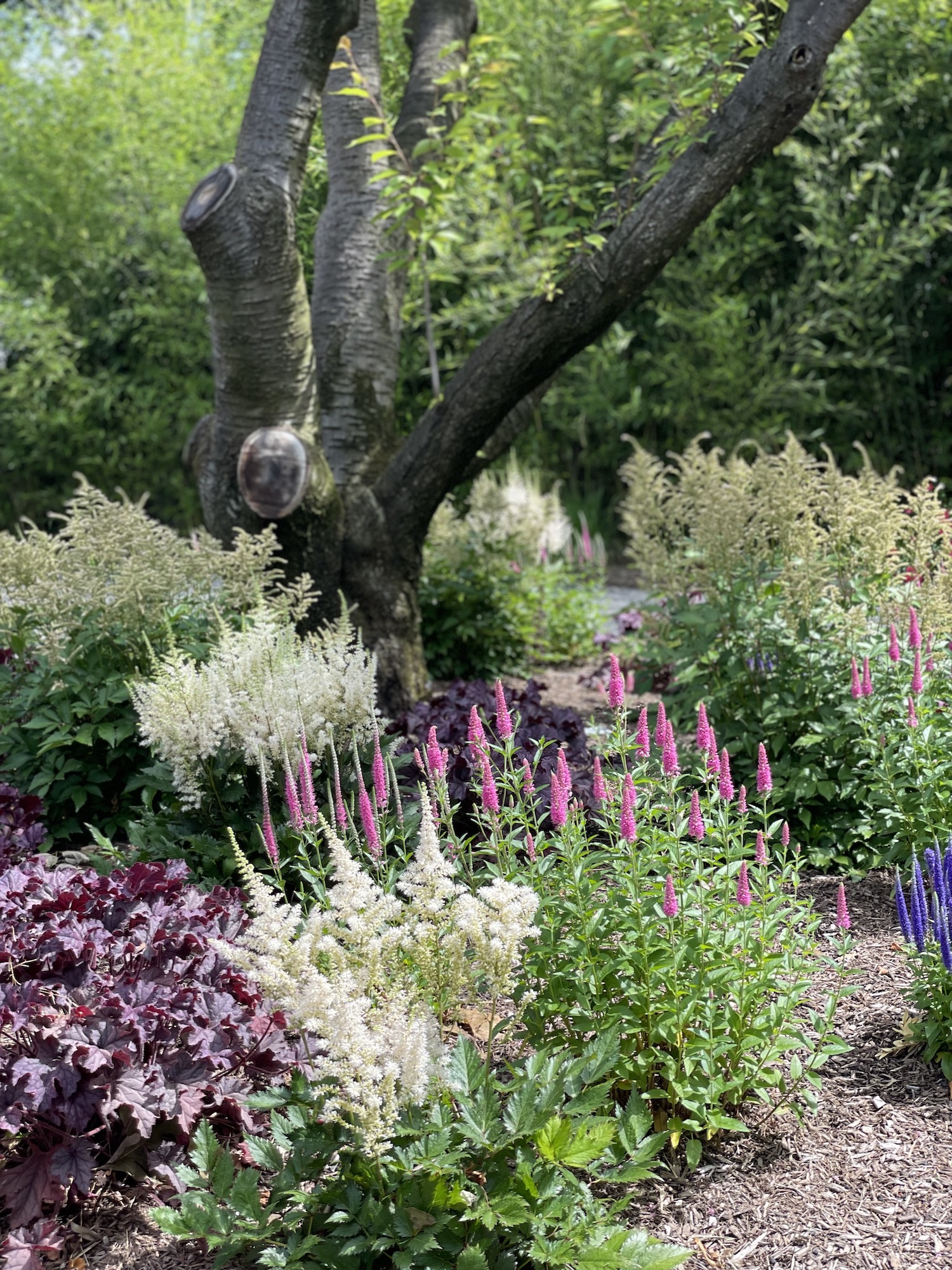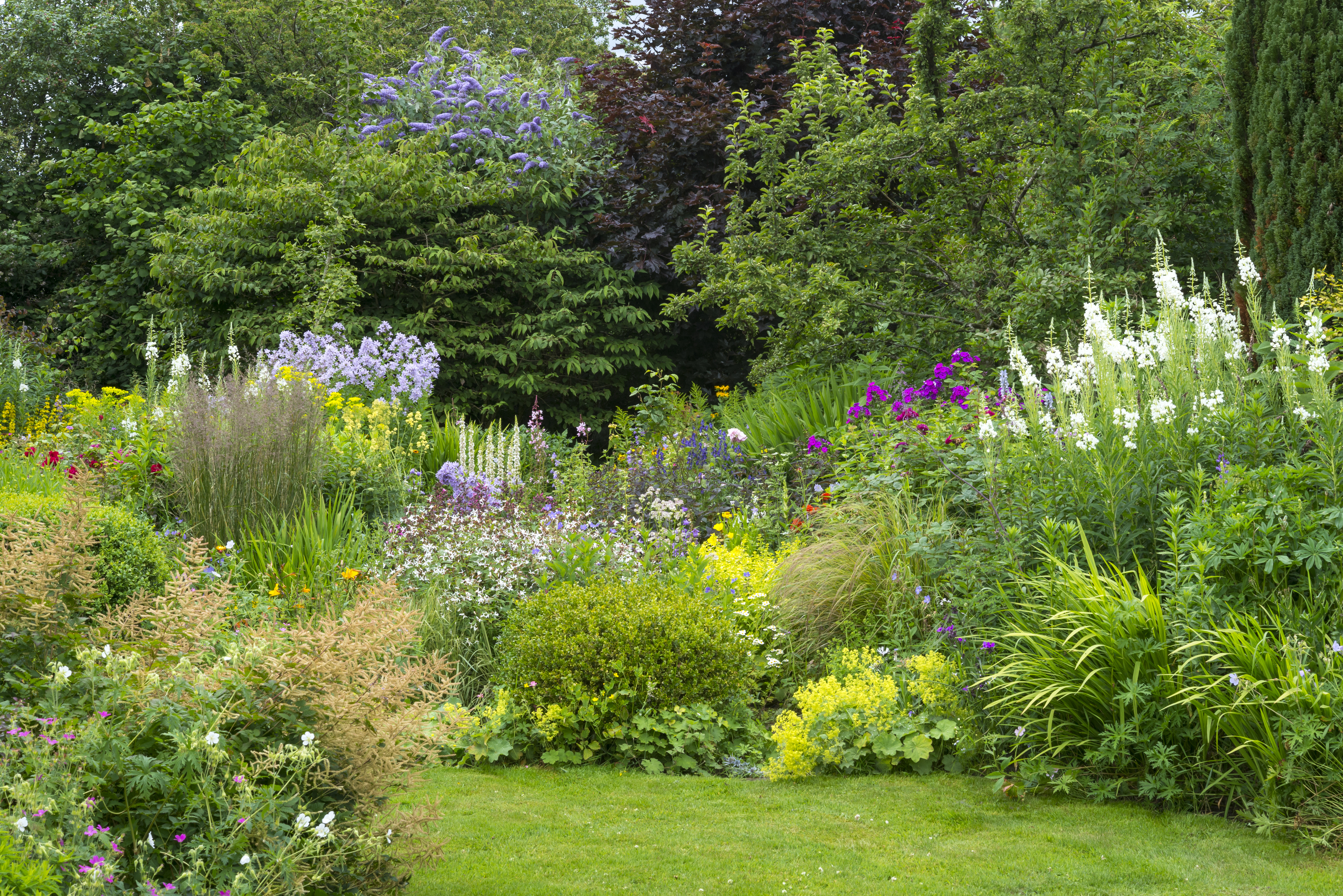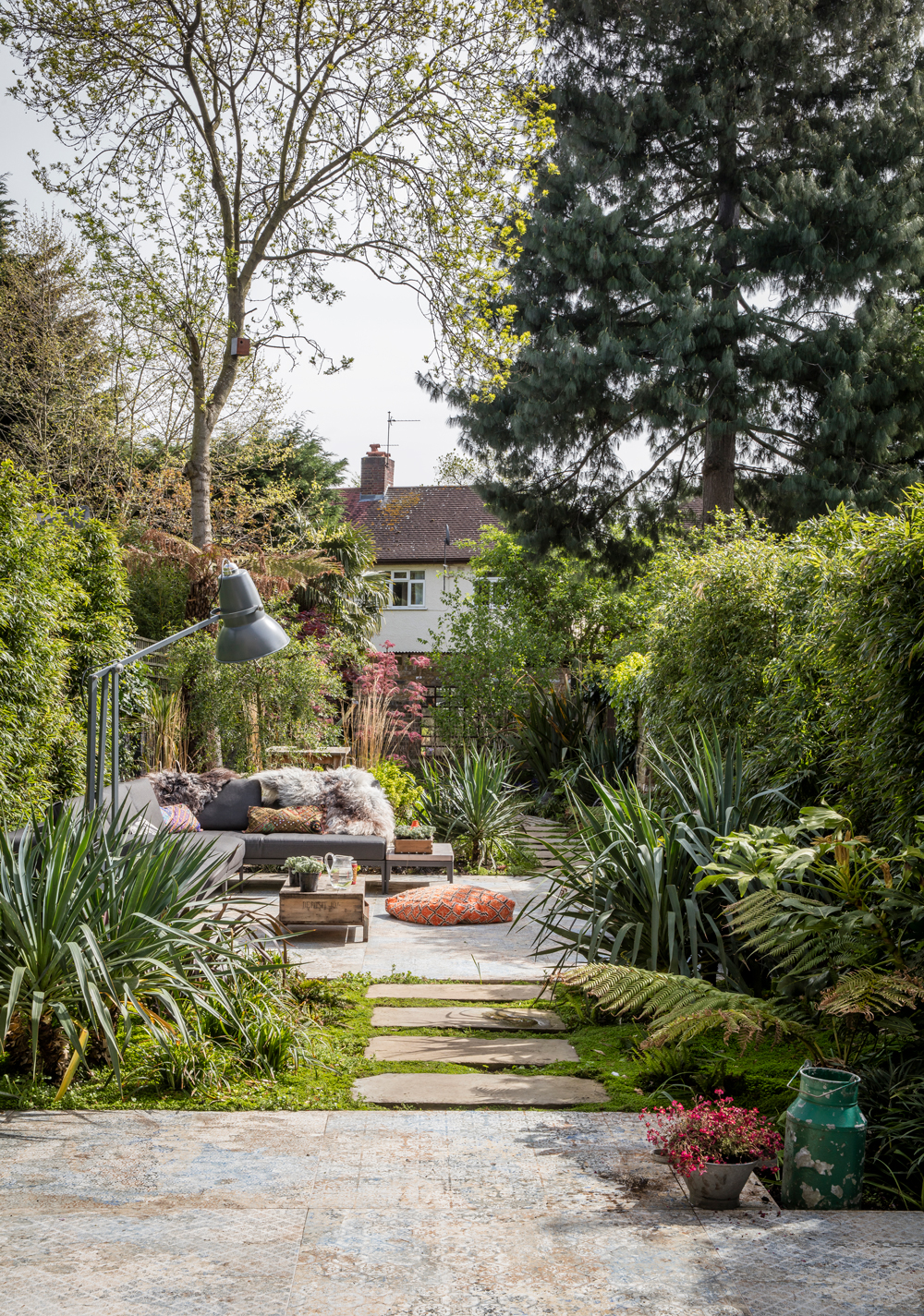
Summer gardens are in full bloom and even our favorite celebrities have been toiling away to get theirs in shape in time for the season. Layered garden borders are a leading trend with intentionally designed floral vistas taking precedence over classic segregated gardening, and true to her nature, Ina Garten has made sure her backyard serves up serious garden envy.
Revealing her beautiful outdoor space in a recent Instagram post, Ina credited Marders Landscaping for the gorgeous garden setting. Featuring a carefully curated collection of flowers and foliage weaving their way through each other and flanking the pathway that leads back into her home, Ina's garden is the perfect setting for a season spent outdoors.
As always, we're constantly looking to learn from the experts and adopt the latest trends into our own garden border ideas, so we spoke to a couple of experts who gave us the lowdown on everything Ina's landscapers did right. Here are seven tricks to take on board.
1. Diverse Plant Selection

Gardening expert Tony O'Neill tells us that Marders Landscaping did a stunning job creating Ina's garden and immediately points out the varied selection of plants mixed into the patches.
'The garden features a variety of plants, including perennials, shrubs, and trees, which add depth and interest,' says Tony. 'Besides creating a dynamic visually appealing garden, diverse plant selection also ensures year-round interest and resilience against pests and diseases.'
Landscaping expert Steve Sylva informs us that Ina's mix of plants from groundcovers to tall flowers is the key to a neat, varied garden. He explains that creating layers with the tallest plants at the back down to low-growing ones at the front makes all the difference to the space and offers a great way to add height to a backyard that feels flat.
2. Thoughtful Layering

We find that the one thing that sets basic gardens apart from beautiful ones is the intentional landscaping ideas, and Tony agrees. 'The garden is meticulously layered, with taller plants at the back and shorter ones at the front,' he notes. 'This allows for a continuous display of blooms and foliage, enhancing the garden's aesthetic appeal.'
Ward Dilmore, founder of Petrus Landscape, calls attention to the clever layering of Geranium ground cover for the lowest height at the front of the garden, silver lamb’s ear for a mid-height behind the ground cover, and finishing with white roses and purple salvia for the tallest plants in the back.
While layering plants maximizes space, Tony informs us that this technique creates a sense of depth and fullness. Finding the maximum height to which each plant grows and lining them up in ascending order so that the tallest plants are at the back is the best port of call for layered gardens. This way all your plants get to share the spotlight and it gives way to a clean finish.
3. Color Coordination

If you've ever looked at a beautifully groomed garden and are wondering what seems to be bringing the overall appeal down, you probably have the combination of incompatible colors to blame. In this case, Ina's gardeners have matched colors that pair perfectly with a dreamy blend of blooming hues. Ward commends the landscaper's choice of combining white flowers with purple, which he explains is a classic combination in landscape design, as well as an emerging garden trend this year.
Steve also finds the cocktail of colors to be a pleasing scheme of hues that work wonders together. 'It's clear her landscapers carefully chose plants that complemented each other, both in foliage and flower,' he says. 'Such harmonious color combinations create a visually stimulating environment that's both cohesive and interesting.'
4. Attention to Texture

Texture might not be the first thing that comes to mind when mapping out your flower bed ideas, but it should certainly not fall off your list of considerations. As you can probably tell, visual interest plays a key role in creating a stunning garden and so it's important to intersperse differing textures.
Tony explains that different plant textures are used to add variety and contrast. 'Combining plants with varying textures, from feathery grasses to bold-leaved shrubs, gifts depth and dimension to the garden,' he says. 'It keeps the landscape interesting and engaging.'
Each time your eyes travel across Ina's garden, your attention will latch onto a different crop and besides color, this is also owed to texture. It's one among the many principles of design that holds authority both inside and outside a home.
5. Seasonal Interest

Whether you put your back into growing your own layered garden or you spend a hefty amount of money on a landscaper, you want your time and money's worth. This means having a garden that thrives year-round.
Which is why seasonal interest is of utmost importance. If not for including plants that flourish throughout the year, you'll be left with a garden that is the star of your backyard during certain seasons and dead in others. We all want a garden full of flowers that bloom in summer, but it's important that your space has visual interest throughout the rest of the year too.
Tony notes that Ina's garden is designed to offer visual interest in all seasons, with plants that bloom at different times of the year. While finding your perfect formula for blooms can be tricky, the benefits are so worth it. Tony put it best when he said that seasonal interest provides continuous enjoyment and showcases the garden's evolving beauty.
6. Use of Focal Points

All of the best modern garden ideas include focal points as the ultimate finishing touch to a garden. A focal point often acts as the crowning glory of a space and effortlessly draws your line of sight toward it.
According to Tony, Ina's garden incorporates focal points, such as strategically placed trees, sculptures, and seating areas. He explains that focal points are important as they help organize the space and provide a sense of structure and purpose. Each room in your home likely has a striking element that masterfully stands out without being too jarring. These focal points are meant to do the same, just outdoors.
7. Quality Crops and Maintenance

These two factors go hand-in-hand. For no matter how great the maintenance, bad-quality crops will wilt without a doubt, and no matter how good the quality is, a lack of maintenance will eventually result in the downfall of any space.
While we may have listed this last, Tony tells us that this is one of the most important aspects to consider. 'Consistent care and maintenance are essential for a healthy and thriving garden,' he says. 'It prevents overgrowth, disease, and other issues that can detract from the garden's beauty.'
Steve tells us that he prioritizes top-tier products and meticulous upkeep through every project he works on. 'This guarantees not only immediate beauty but also long-lasting results,' he says. 'After all, a layered backyard requires regular pruning, fertilizing, and seasonal care to maintain its structured look and health.'







